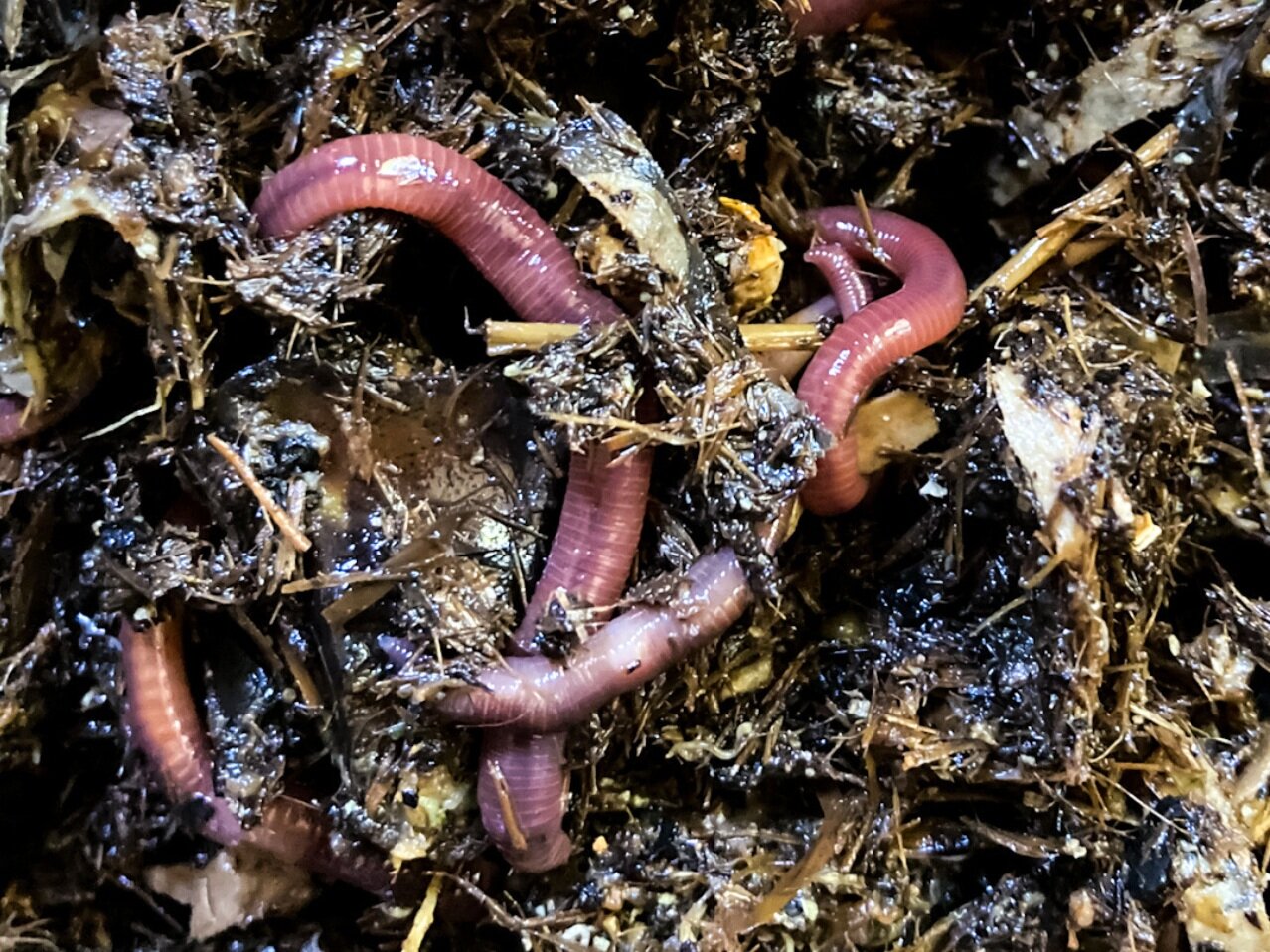How to Raise Worms for Composting and Soil Improvement
Baker Creek Seeds Horticulturist Shannie McCabe shares her experience with at-home worm farming.
Shannie McCabe
August 19, 2020
Like all gardeners, I love to baby my plants, so when I heard worm castings and worm tea referred to as ‘black gold for plants,’ I immediately wanted to get in on the wormy action.
‘Castings’ is a polite term for the worms’ excrement. Many gardeners farm a few pounds of red wiggler worms, feeding these beneficial invertebrates kitchen scraps and harvesting the digested and deposited castings to feed to their plants.
A garbage disposal and fertilizer maker rolled into one? Sign me up!
My gardening friends assured me that raising a few pounds of worms would be surprisingly inexpensive, easy and not nearly as messy as one would expect, so I decided to purchase a pound of red wigglers to try first hand.
Buying worms
I decided to purchase a pound of red wiggler worms from a trusted local worm farm, called Our Vital Earth. Although they offer an online order and shipping service, I drove to pick up my new babies and was given some essential care instructions upon arrival.
The worms should be kept between 50-70 degrees fahrenheit while in transit. They can survive between 33-90 degrees, but the extremes will stress them out, so I kept them out of direct sunlight while I prepared their new home. The main point here is to keep the worms from drying out.
If your worms are shipped to you, they will come in a ball of newspaper shreds, which will itself be wrapped in a plastic bag with holes. Be sure to get them into their new home ASAP so they don’t dry out in the bag, and always remember to punch air holes in any container you put them in.
Making a Worm Home
It’s important to have your worm bin set up and ready for when your worms arrive. I had originally planned to build a simple, 3-story plastic tote bin for my worms, but I ended up purchasing a lightly used worm bin that happened to be for sale on Let Go. With that being said, I watched several YouTube tutorials on the plastic tote system, and many people report that it works well, so don’t let this discourage you from trying.
I set up my new worm condo in a shaded Florida room at the back of my house, as worm bins should be located out of the intense sun and heat.
Feeding Your Worms
Perhaps the best part about keeping worms is that they eat your leftovers! The key is to avoid overfeeding your worms, especially when they have first arrived (they need some time to settle in before their consumption reaches its capacity).
Once re-homed in their bin, I started them on a half pound of vegetable juice pulp from my juicer and a sprinkle of grit. Grit is an essential component of the worms’ diet, and I purchased a high quality bag from the farm to ensure they were well-fed. After about three days, they had eaten it all and the worms were ready to eat a half pound of food daily.
I still add grit once a week, and feed them scraps every day. I have read a lot about where to locate scraps in the bin, and the general consensus seems to be that you should keep the scraps in a corner or one side of the bin, alternating each time they finish eating. This ensures the worms don’t have to sit in their own food all day.
Troubleshooting
If you're like me and new to worm keeping, you will quickly learn that, like any other animal, they need attention and care. I check on my worms about twice a day, mostly because I find their behavior fascinating, but also to be sure that they are eating their food and look healthy.
After about a week, I noticed ants and black soldier fly larvae in my bin. The ants can eat your worms, so I decided to remedy the issue by adding a bit of diatomaceous earth. The black soldier flies are actually great to feed to chickens and do a great job of breaking down organic material; however I will add more bedding (shredded paper bags) to reduce their numbers.
I’ve only had the worms for a month, so I haven’t collected any tea or castings yet — but I will, so stay tuned for more!
Have you tried farming your own worms? Know a thing or two about keeping these creepy-crawlies happy? We’d love to continue the conversation.

